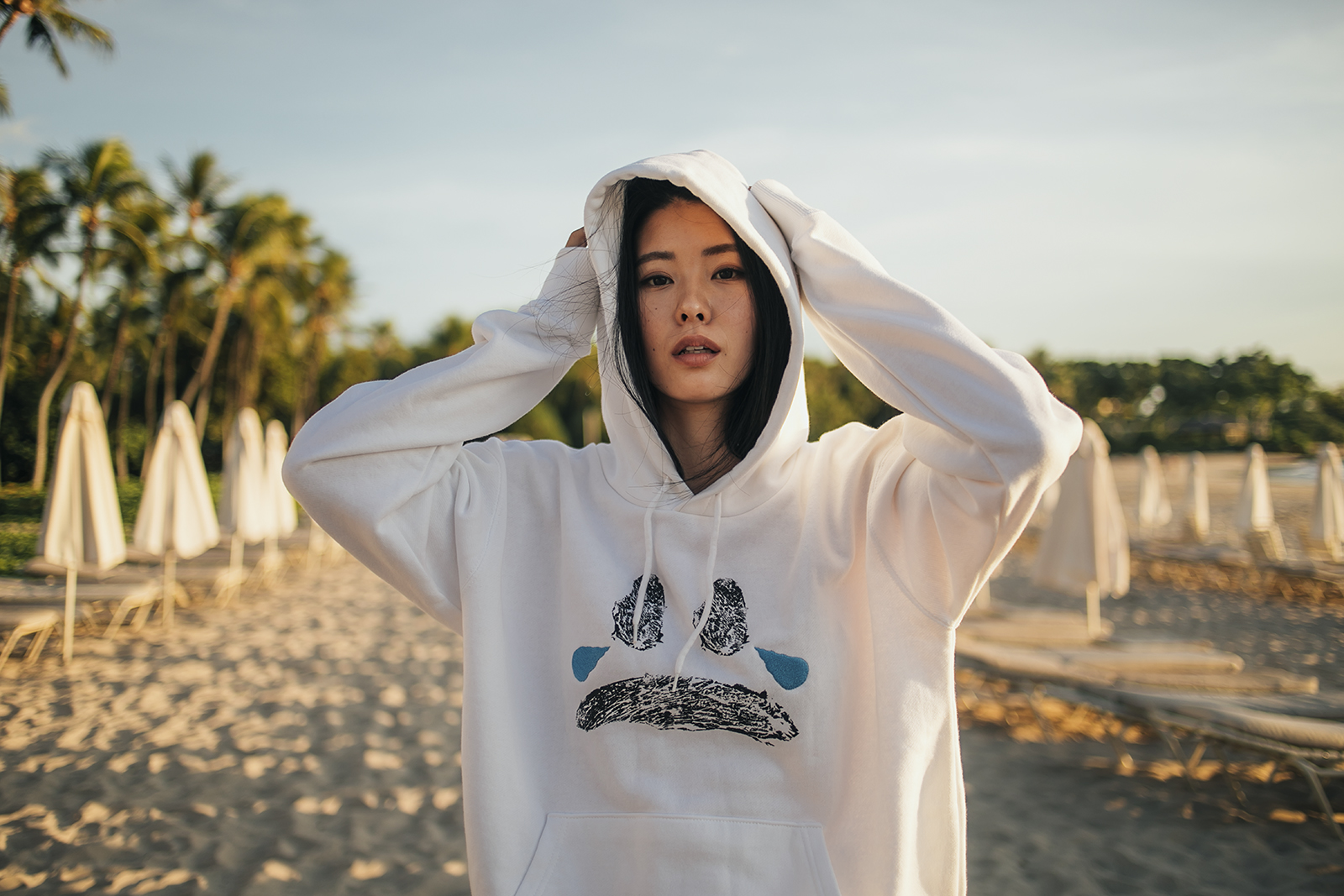Alum highlights disappearing line between fashion and fine art in art exhibition

Model Chikako Fukuyama posed for alumnus Michael Ho’s artwork collection “SEQUENCE 1,” which features mock clothing that imitates a fashion brand. Ho said that in the project, he aimed to blur the line between fashion and fine art, which is a recent trend in the art world at large. (Courtesy of Nani Welch Keli`iho`omalu)
By Alexsandra Coltun Schneider
Jan. 5, 2020 10:33 p.m.
The distinction between fashion and fine art is blurred within the “SEQUENCE 1” artwork collection.
Alumnus Michael Ho, the artist behind the collection, said there is a recent global art world trend of interweaving the fashion and fine art fields. “SEQUENCE 1,” which was presented in Tokyo in 2019, is based on Ho’s fascination with this tendency alongside the rising prevalence of commercialism in the art field, he said. The collection came from his interest in the phenomenon, as Ho said he created a collection of mock clothing that imitates a fashion brand – his designs incorporate and place an emphasis on imagery of his own previous artworks.
“The premise of (the) project is to simulate … this belief that this fantastical brand somehow exists and is somehow active in the fashion world,” Ho said.
Audiences were able to browse artworks in the gallery space, which was made to reflect a retail environment, Ho said. The pop-up exhibition was located in a central shopping district in Toyko, he said, and had an operational cash register to reflect the atmosphere of a retail store. The space featured clothing hung from a wall-mounted pole and figures entitled “ASIAN SQUAT” placed on pedestals in the center of the gallery, Ho said.
[Related: Mundane items meet student’s design to form clothing line inspired by fish, stars]
One of the main features of the fashion line is a design depicting a crying face, which Ho said is a reference to his printing practice of meat prints. Ho’s meat prints for large-scale paintings require a raw piece of steak, he said, as he submerges the meat into an ink or paint liquid before thwarting the steak against a canvas. The result is a design of inconsistent, yet recognizable impressions of a piece of meat, Ho said.
“You can see (and) feel this visual relationship that’s established between the clothing themselves to my practice … just based on (the) motifs that I use,” Ho said.
Those interested in wearing the art can purchase clothing in the collection, said gallery director Kosuke Shimamura. The collection allows for the public to gain more interest in the artistic field, he said, since placing art on clothing makes it more financially accessible. Whereas other brands such as UNIQLO simply use other artists’ work for their designs, Shimamura said Ho uses his own artwork, showing an increased interplay between artist and fashion designer.
“People are interested with combining something with something,” Shimamura said. “Artists don’t make something for the T-shirts, (fashion brands are) taking material from the artists and then just putting (it on) T-shirts.”
Ho said he attempts to mirror the format of fashion brands by making it seem that there will be seasons with his collection – “SEQUENCE 1” appears as the inaugural phase. The collection’s title implies that there will be upcoming releases, Ho said. But stylistically and visually, the collection is a comedic take on the basic streetwear trend, Ho said, due to the use of basic silhouettes and cuts of generic hooded sweatshirts. Ho said he plays with the popularity and concept behind taking designs and placing them on basic garment pieces.
[Related: Student artist combines classical art approach with 3D rendering]
Alum Ricky Amadour said Ho is an interdisciplinary artist who ranges from paintings to performance art. Ho creates artwork that isn’t just on a canvas or posted on the wall, but rather is showcased in sculpture or portrayed through performance, they said.
Ho’s artistic approach resembles that of Virgil Abloh, Amadour said, who is an artistic director and designer of Louis Vuitton. They said Abloh is an example of a fashion designer who can also be classified as a fine artist, as he brings the two art forms together. Ho reflects Abloh’s artistry due to his blending of different industries in “SEQUENCE 1,” Amadour said.
“I think that there’s an infiltration happening from artists that are coming from … fashion industries that were once … precepted to be more inclusive – and they’re growing, meshing and merging (from) within and really disrupting both industries,” Amadour said.
Ho’s work includes biographical elements that allude to his background of being Japanese and from Hawaii, he said. For example, Ho said he is from the Big Island, and the collection was photographed there. The collection’s figure, “ASIAN SQUAT,” features elements from nature, Ho said, as its eyes are hibiscus flowers and its mouth is a banana leaf. Ho said “ASIAN SQUAT” is a central agent to the collection, and also includes a design of the figure on pieces in the fashion line.
“Having (the elements) as pervasive motifs throughout the collection … (is) somewhat emblematic of the diverse biomes that exist on my island,” Ho said.

